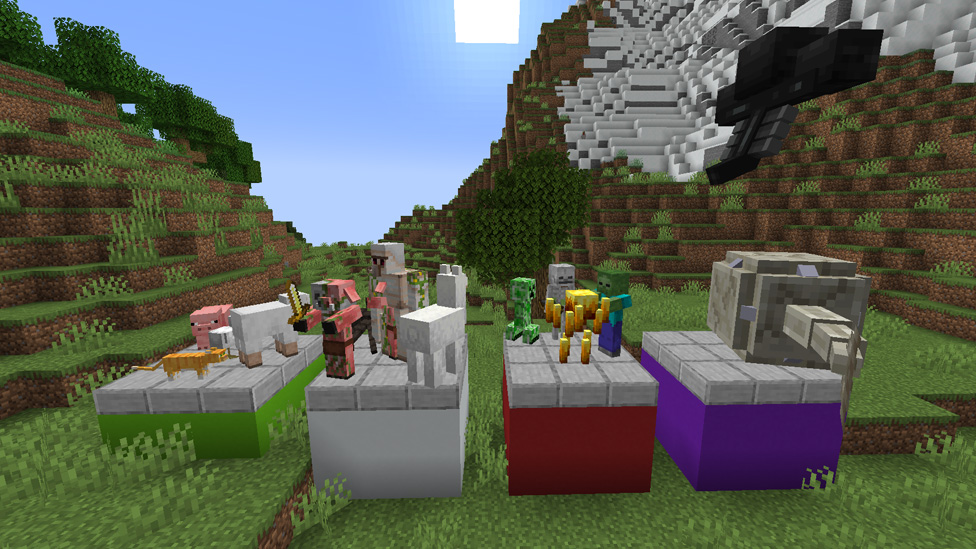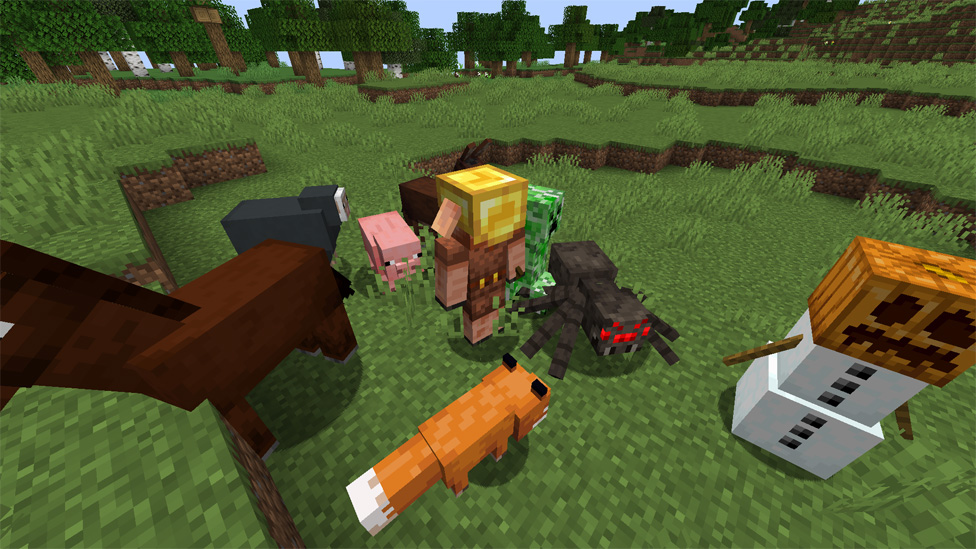Minecraft Mobs
Make Your Own Minecraft Server For Free
Your own Minecraft server is only 5 minutes away! We support simple one click install for over 1000 unique modpacks.
Free Minecraft Server Hosting
You're quite right to understand why these mobs are critical in totally getting the hang of this Minecraft world, each one with its type of behaviour. With this guide, you'll be left informed and prepared not only for those kinds of dangers but how to overcome them and also take advantage of the help that various mobs are offering the player.
With ScalaCube's seamless setup process, you can quickly and effortlessly create Minecraft servers. Begin your journey as a server owner and start building your community today.

Types of Minecraft Mobs
Mobs in Minecraft can be broadly classified into four categories based on their behaviour towards players:- Passive Mobs: They tend to be friendly and never are there any sort of threat to the player. Most of the time, they tend to offer resources from where they are. Examples include cows, pigs, sheep, and chickens, respectively. Mobs can be bred by animals and killed (wolves, cats) to drop loot or can be interacted with.
- Neutral mobs: These mobs remain in an unprovoked stance until provoked. Such kinds include the likes of a wolf, who is going to stay cool unless attacked. Some of the neutral mobs include Iron Golems, which can attack players only if they are aggressive towards the villagers, and Piglins unless hostile towards players not wearing golden armour. Knowing how to interact with neutral mobs will be the key to avoiding unnecessary conflict.
- Hostile Mobs: Just as it sounds, these mobs will attack the player on sight. Some of the most common examples of hostile mobs include zombies, skeletons, spiders, and creepers. The players have to be prepared to fight back to survive at night and wander through dangerous territory, like dungeons and the Nether.
- Boss: The powerful entities presented in Minecraft can be described with the following ultimate challenge entities.
- The Ender Dragon: The ender dragon is the ultimate boss of the game inhabiting the area called the End. To defeat this "thing," it will take proper preparation, gaining decent gear, and fighting very precisely and intelligently.

Exploring Specific Mobs
This section dives deeper into some noteworthy mobs within each category:- Passive Mobs: These are the mobs that players depend on to acquire their resources. Cows provide leather and beef, sheep can be a source of wool for crafting, and pigs can be bred for food. Horses and donkeys can be domesticated for riding or transportation, and wolves will be domesticated after taming.
- Neutral mobs: Iron golems will work as village guardians and will attack any hostile mob that can pose a threat to villagers. Players will have the freedom to build their iron golems, which they will use to defend their bases. Piglins: They live in the Nether, and the mobs from this biome will perform barter with the player, offering gold ingots in place of some resource valuable to them, for example, nephrite scrap.
- Hostile mobs: A screen has an incredible danger in that it can blow itself up and, in so doing, deal great damage. A horde of zombies will slowly proceed to surround you. Skeletons fire arrows, while spiders climb walls and poison. Players must develop combat strategies to counter each hostile mob's unique attacks.
- Boss Mobs: The Ender Dragon is the first super boss. Killing the Ender Dragon allows one to roll credits and lets a player move freely between dimensions.
Experience unparalleled freedom and flexibility as you use ScalaCube's platform to create Minecraft servers. Craft unique worlds, forge friendships, and leave your mark on the Minecraft universe.

How to spawn specific mobs in Minecraft?
While most mobs spawn naturally in their respective biomes, players can use spawn eggs (obtained through creative mode or creative spawning mechanics in survival) to spawn specific mobs.
Can all mobs be tamed?
No, only a select few mobs can be tamed, including wolves, cats, horses, donkeys, and parrots. Each has its taming method, requiring specific items like bones for wolves or fish for ocelots (which transform into cats upon taming).
How to avoid hostile mobs at night?
Building a well-lit shelter is the most effective way to deter hostile mobs at night. Hostile mobs spawn in darkness, so keeping your base brightly lit prevents them from spawning inside.
What are the best ways to farm resources from mobs?
A mob farm is simply a way for a player to exploitably gather resources from specific mobs. For that reason, it is intentionally built to spawn and kill, thus dropping loot at the point of death for ease of picking it.
Conclusion
The mobs in Minecraft belong to the game world and will provide challenges, resources, and even comrades. Once the player knows what kinds of mobs exist and how to behave, they will perfectly exist in the blockyverse. From taming a loyal wolf companion to outsmarting a cunning screen creeper, be it taming a loyal wolf companion or outsmarting a cunning screen creeper when you're going up against the mighty Ender Dragon, know that the following different mobs populate Minecraft to help bring forth both adventure and success.That's all. Ready for the new adventure in Minecraft, when you can interact with all those nice creatures? ScalaCube is a quality hosting solution for a Minecraft server that assures you and your friends get truly lag-free, smooth top-quality game practice.
Make Your Own Minecraft Server For Free
Your own Minecraft server is only 5 minutes away! We support simple one click install for over 1000 unique modpacks.
Start Your Server For Free!
Copyright 2019-2025 © ScalaCube - All Rights Reserved.